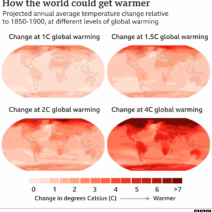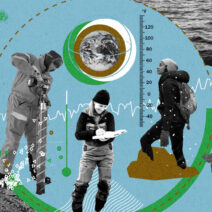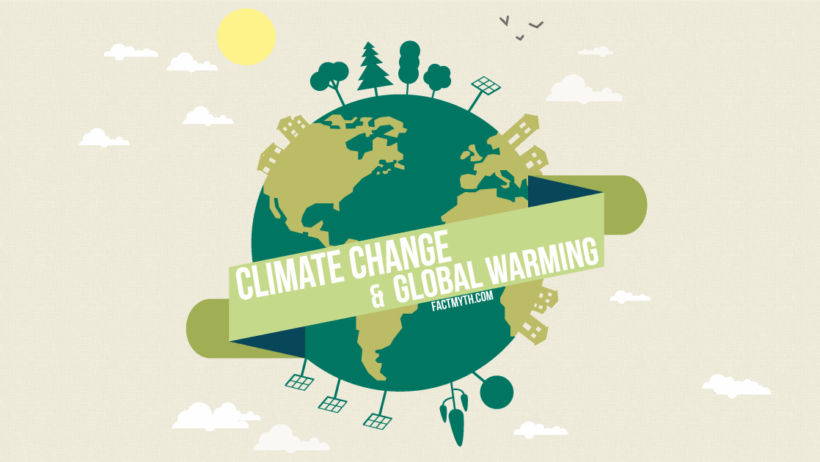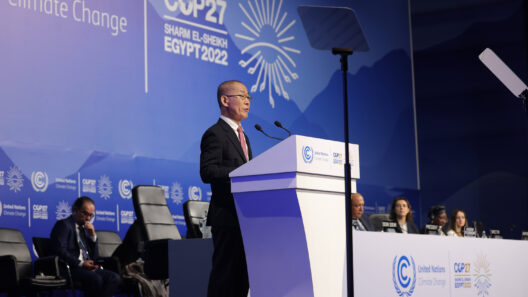In contemporary discourse, the terms “climate change” and “global warming” are often used interchangeably. However, these concepts embody distinct but interrelated phenomena and understanding their differences is pivotal for fostering a comprehensive approach to environmental advocacy and policy-making. Grasping the nuances of these terms can engender a profound shift in perspective, illuminating the intricate dynamics underpinning our planet’s atmospheric systems.
At its core, global warming refers to the long-term increase in Earth’s average surface temperature due primarily to human activities, notably the combustion of fossil fuels, deforestation, and the release of greenhouse gases (GHGs) such as carbon dioxide and methane. These activities enhance the greenhouse effect, a natural process that traps heat in the atmosphere. The ramifications of global warming are not merely statistical; they herald perilous consequences, including rising sea levels, extreme weather events, and altered precipitation patterns.
Conversely, climate change is a broader term encapsulating global warming along with other alterations in climate patterns that may not necessarily originate from temperature fluctuations. Climate change encompasses changes in precipitation patterns, shifts in seasonality, and the increased frequency and intensity of weather-related disasters. This definition extends to encompass phenomena such as ocean acidification and shifts in wildlife populations and habitats, all of which are exacerbated by global warming.
Why does this distinction matter? Understanding these differences can enhance public discourse, frame policy discussions, and prioritize solution-oriented approaches. A singular focus on global warming may lead to a myopic view of environmental challenges. In contrast, acknowledging the broader implications of climate change invites a holistic approach that addresses interconnected systemic failures.
One pivotal aspect of climate change is its regional variability. While global warming might manifest as an increase in average temperatures across the globe, climate change can lead to localized anomalies. Some areas may experience increased aridity, while others may suffer from excessive rainfall and flooding. Such regional disparities necessitate sensitive adaptation strategies that account for local environmental conditions. Understanding these nuanced impacts is essential for communities devastated by climate-related disasters, fostering resilience through tailored policy interventions.
Moreover, the interplay between these phenomena has irrevocable implications for biodiversity. A warming planet alters habitats and threatens species that are unable to adapt or migrate in accordance with shifting climate zones. As ecosystems become destabilized, the cascading effects on food chains and biodiversity loss intensify. The nuanced understanding that climate change transcends mere temperature increases crystallizes urgency—our ecosystems are entangled in an intricate web, and disruption in one area can profoundly affect another.
In light of the stark realities posed by climate change, the discourse surrounding responsibility and mitigation strategies becomes paramount. One cannot extricate human agency from these discussions. The cumulative impacts of industrialization, urbanization, and unsustainable agricultural practices propagate the crisis at hand. Recognizing this accountability extends beyond the developed nations to include emerging economies as their developmental trajectories unfold. Hence, discussions on climate equity and fair resource distribution are critical to a holistic understanding of climate-related issues.
Conversely, possible solutions must also be differentiated based on the focus on global warming or climate change. Strategies to mitigate global warming often emphasize reducing GHG emissions through renewable energy initiatives, energy efficiency improvements, and technological advancements. However, addressing climate change encompasses a wider array of strategies, including improving land management practices, enhancing water conservation efforts, and bolstering the resilience of communities to adapt to the evolving climatic conditions.
Engaging in informed dialogue surrounding climate change invites exploration of renewable energy sources, energy conservation, and innovative practices such as reforestation and ecosystem restoration. Highlighting the interconnectedness of environmental issues magnifies opportunities for interdisciplinary collaboration, incorporating insights from fields such as ecology, economics, and social sciences. This marriage of perspectives is essential in crafting resilient strategies that protect both human wellbeing and ecological integrity.
Furthermore, invoking curiosity about the complexities of climate change can stimulate greater public engagement and literacy. A population that comprehends the multifaceted nature of climate change is more likely to advocate for substantive action, holding political leaders accountable and participating in grassroots movements. The role of education, therefore, cannot be overstated; instilling a deep-seated understanding of how climate change interlinks with social equity, natural resource management, and economic stability empowers individuals to enact change at various levels—from local communities to global summits.
Indeed, addressing climate change necessitates a concerted global effort. The Paris Agreement embodies a critical framework whereby nations commit to limiting global warming and enhancing adaptive capacities. However, the path forward requires not merely compliance with international accords but also innovative, localized responses that account for specific challenges faced by diverse communities. Such cooperative engagement fosters solidarity in pursuit of a more sustainable and equitable future.
In conclusion, recognizing the distinctions between climate change and global warming is not merely an academic exercise; it is a clarion call to action. By illuminating the complexities and interrelations of these concepts, we can foster a more profound, nuanced understanding of the environmental crises we face. As stakeholders in this planetary narrative, we must champion effective discourse, equitable solutions, and resilience against the shifting landscape of our climate. By embracing this shift in perspective, we can galvanize efforts that meet not just the challenges of today, but fortify the foundation for generations to come.





